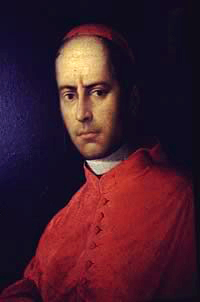Our website is made possible by displaying online advertisements to our visitors.
Please consider supporting us by disabling your ad blocker.
Lay cardinal

In the historical practice of the Catholic Church, a lay cardinal was a man whom the pope appointed to the College of Cardinals while still a layman. This appointment carried with it the obligation to be ordained to a clerical order,[1] meaning that "lay cardinal" was not a permanent state, but a term in reference to a man who was appointed cardinal prior to taking on the clerical state corresponding to that appointment.[2]
The current law of the Catholic Church is that a man must be first ordained at least a priest in order to be considered for appointment as a cardinal.[3]
- ^ Cartwright, William Cornwallis (1868). On Papal Conclaves. Edinburgh: Edmonston and Douglas. p. 123.
Laymen were named Cardinals only for twelve months, being bound within that period to take Deacon's orders
- ^ Cartwright, William Cornwallis (1868). On Papal Conclaves. Edinburgh: Edmonston and Douglas. pp. 121–122.
In all these cases, however, it is clear that some orders had been taken; and therefore, in the strict sense of the term, these Cardinals were no longer laymen.
- ^ Code of Canon Law. 1983. Canon 351 §1.
Previous Page Next Page



